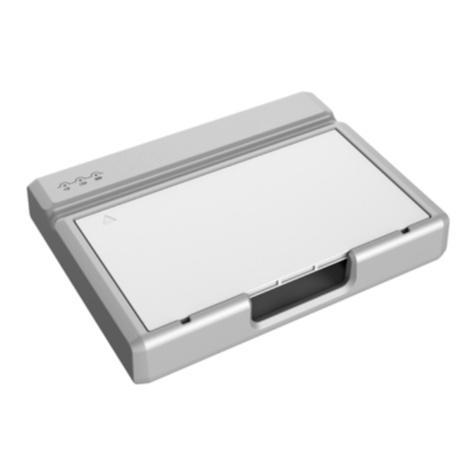
Standards
IEC 60601-1:2005/AMD1:2012 Medical electrical equipment — Part 1: General
requirements for basic safety and essential
performance
IEC 60601-1-2:2014/EN60601-1-2:2015 Medical electrical equipment — Part 1-2: General
requirements for basic safety and essential
performance — Collateral standard:
Electromagnetic disturbances v Requirements and
tests
IEC 62133-2:2017 Secondary cells and batteries containing alkaline or
other non-acid electrolytes — Safety requirements
for portable sealed secondary lithium cells, and for
batteries made from them, for use in portable
applications — Part 2: Lithium systems
IEC 62220-1-1:2015/EN 62220-1-1:2015 Medical electrical equipment — Characteristics of
digital X-ray imaging devices — Part 1-1:
Determination of the detective quantum efciency
- Detectors used in radiographic imaging
IEC 62304:2006/AMD1:2015 Medical device software — Software life-cycle
processes
IEC 62366-1:2015/IEC 62366:2007/EN62366:2008 Medical devices — Part 1: Application of usability
engineering to medical devices
IEC 60601-1-6:2010+A1:2013 Medical electrical equipment — Part 1-6: General
requirements for basic safety and essential
performance — Collateral standard: Usability
EN ISO14971:2012 Medical device — Application of risk management
to medical devices
ANSI/AAMI ES60601-1:2005/
(R)2012+A1:2012+C1:2009/(R)2012+A2:2010/
(R)2012
Medical electrical equipment — Part 1: General
requirements for basic safety and essential
performance (IEC 60601-1:2005, MOD)
CAN/CSA-C22.2
No.60601-1:14
Medical electrical equipment — Part 1: General
requirements for basic safety and essential
performance
ISO 15223-1:2016/ EN ISO 15223-1:2016 Medical devices — Symbols to be used with
medical device labels, labeling and information to
be supplied-Part 1: General requirements
Safety and Regulatory Information
AL4609 1-2 2021-09-21




























